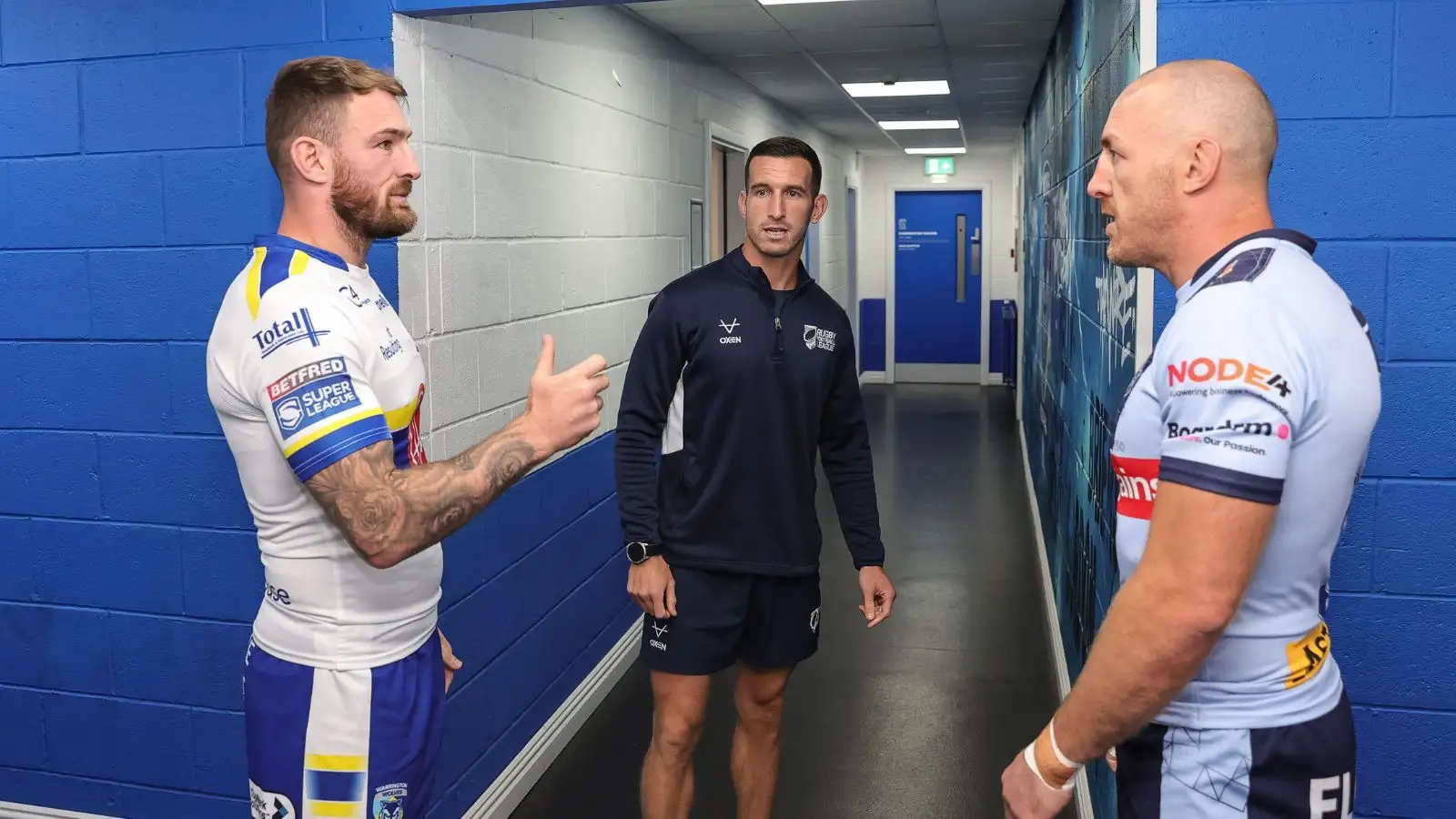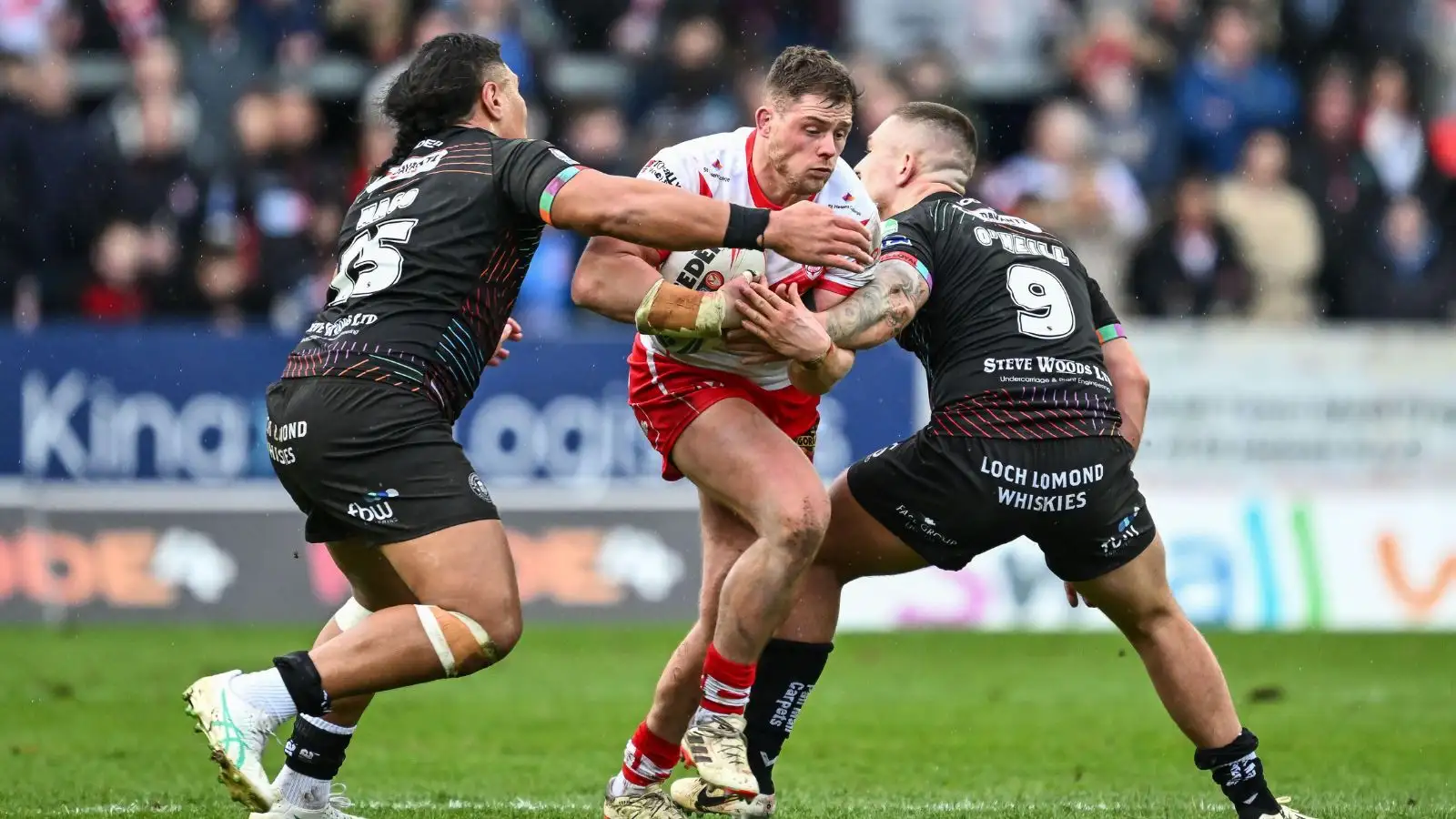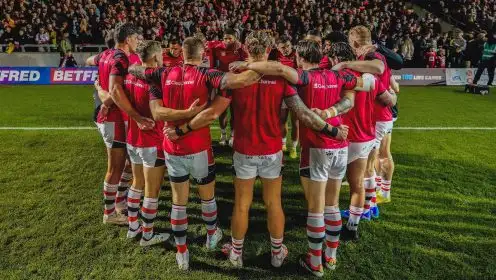Whisper it quietly: Daryl Clark has transformed St Helens’ attack post-James Roby

New St Helens signing Daryl Clark (left) has taken the No. 9 shirt from James Roby (right)
It may only be three games, but the signs are already there.
St Helens supporters may have been worried on how they would cope with life after arguably their greatest-ever player, but ask any Warrington Wolves fan who has watched Daryl Clark quietly excel for the past few seasons, and they would have no doubt predicted the Saints would be okay post-James Roby.
Clark and Roby are not the same as hookers. They offered different strengths and different ways of playing to the St Helens side they are now central to the success of. While Roby was consistently brilliant, brimming with work-rate and as efficient as they come from dummy-half, Clark brings something different.
And his arrival has coincided with a change in the way Paul Wellens wants his side to play. That is not a coincidence, though – and the statistics back it up. Granted, it wasn’t on display last night too much in testing conditions, but Leigh’s game-plan was clear from the very first minute: shut Clark down and stop Saints getting any momentum.
Their marker tackles were through the roof; the Leopards made over 65 tackles around the ruck, one of the highest totals posted in Super League this season. There was clear intent to stop a player that is notorious for his speed and dynamism around the ruck getting any sort of roll on and in truth, it largely worked. It created a sense of panic in the Saints we hadn’t seen in their opening two games, with their attack looking clunky as a result.
But Clark’s impact on games in 2024 is still clear for all to see. He measures completely differently to Roby in a plethora of metrics: some good, some bad – but what it shows overall is how different they are as hookers.
RELATED: Daryl Clark determined to leave his mark on St Helens as James Roby’s successor
Clark made significantly more runs from dummy-half in 2023 than Roby: 109 to 79. This year, he’s top of the entire metric across the whole of Super League. It’s that speed and ability to puncture play from dummy-half which now makes St Helens a greater threat across the field; with defences scrambling thanks to Clark’s dummy-half play, there are more gaps to exploit. That isn’t by chance.
Players like Matt Whitley have enjoyed some of their best success just lurking off the shoulder of Clark and knowing he is going to break the play with a scything run from dummy-half. These days, if the Saints get a quick play-the-ball, their opposition is in trouble with Clark at the ruck. Clark himself can make things happen too; he ran for 1,600 metres last year in comparison to 962 from Roby.

Clark is also a creative threat, perhaps more than Roby was too. He assisted eight tries last season – granted, these are not world-beating numbers we are talking about, but when you factor in Roby assisted three, a number Clark has already matched in 2024, it’s easy to see how he’s given the Saints an extra option in attack.
His assist for Jack Welsby’s try last week was a prime example; with the play open, Clark had the vision to kick through for Jack Welsby to touch down. It was a clear move the Saints will practice in training but with Clark now in their side, they have an extra threat when things are somewhat more open.
There are ways in which the Saints miss Roby: his work-rate around the ruck defensively, for example. But with their new number nine, their attack has been given a new lease of life and with Lewis Dodd impressing so far in 2024 and Jack Welsby consistently brilliant, you do wonder just how fluent the Saints could be when the pitches firm up and they click for real this season.
THE DEBRIEF: Liam Marshall for England? Wigan Warriors talking points after Huddersfield victory



